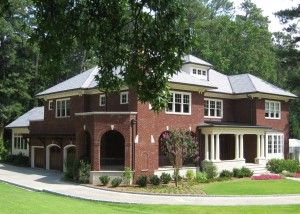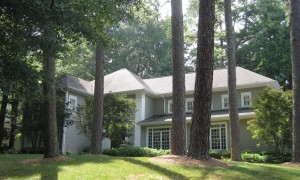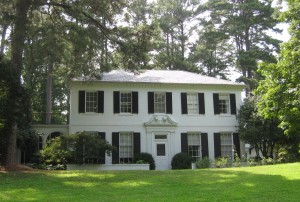
Today’s residents of Atlanta can be proud that their city didn’t give up on the possibility of safe and pleasant neighborhoods flourishing near the heart of the city. The old was not sacrificed for the new simply because it fell briefly on hard times. I hate to think of how very different Atlanta might have been if the protests had been less robust, if I-485 had been built. It was a close call; it had been a sure thing, a project supported by the State of Georgia and City of Atlanta officials. By everyone, essentially, except those who lived in Morningside and Virginia-Highland.
Had a freeway been allowed to snake its way through these two historic neighborhoods, so much character would have been lost. Neighbors would be physically separated by concrete and steel. Trees and green space would be considerably diminished. Had I-485 been realized, there were plans for further widening of many area roads, as well as the demolition of Morningside and Inman elementary schools, both dating from the 20s. Today, both schools have been enlarged and beautifully restored, their architectural style of a piece with that of their neighborhoods.
In all likelihood, the area would have faded into a state of actual urban decay. Decades later, it might have recovered, to some degree. There would be owners who, out of necessity, would find a way to reconcile living along a highway ramp, a river of cars speeding through their back yards. Those monstrous sound-blocking fences might inflict further ugliness.
After the defeat I-485, much of its funding was diverted to MARTA. The city’s rapid transit system would not be as extensive and effective as it is today. Atlanta’s suburbs, now vast, might be even more sprawling, and the city’s mind-numbing traffic probably far worse. Morningside and Virginia-Highland are two of the most sought-after neighborhoods precisely because they are close and easily accessible to the real and varied life of the city. Their residents may avoid Atlanta’s terrifying freeways if they choose. Their homes are nestled safely in the eye of the storm.
Without a doubt, Morningside and Virginia-Highland would not be the inviting neighborhoods they are today; people would not be flocking into the city to live there. Most of the older homes would not have been lovingly restored. The newer ones would not have been so thoughtfully and appropriately reconfigured to fit in with a unified vision for the neighborhoods. While there are large new houses being constructed, there is not a cookie-cutter McMansion in sight. The surrounding landscape is rolling and verdant, sheltered by forests of tall trees.
The successful fight against the highway resulted in Atlanta’s neighborhoods having a greater say in what is built in their back yards. The city now has a system of Neighborhood Planning Units to ensure that residents have a real voice in matters that affect their lives.
Having witnessed first-hand the battle of the old neighborhoods against I-485, I know how fortunate I am to have learned this very important lesson at a young age: if you love something, it’s worth fighting for. And when we join together with one powerful, clear voice, we can accomplish great things.


